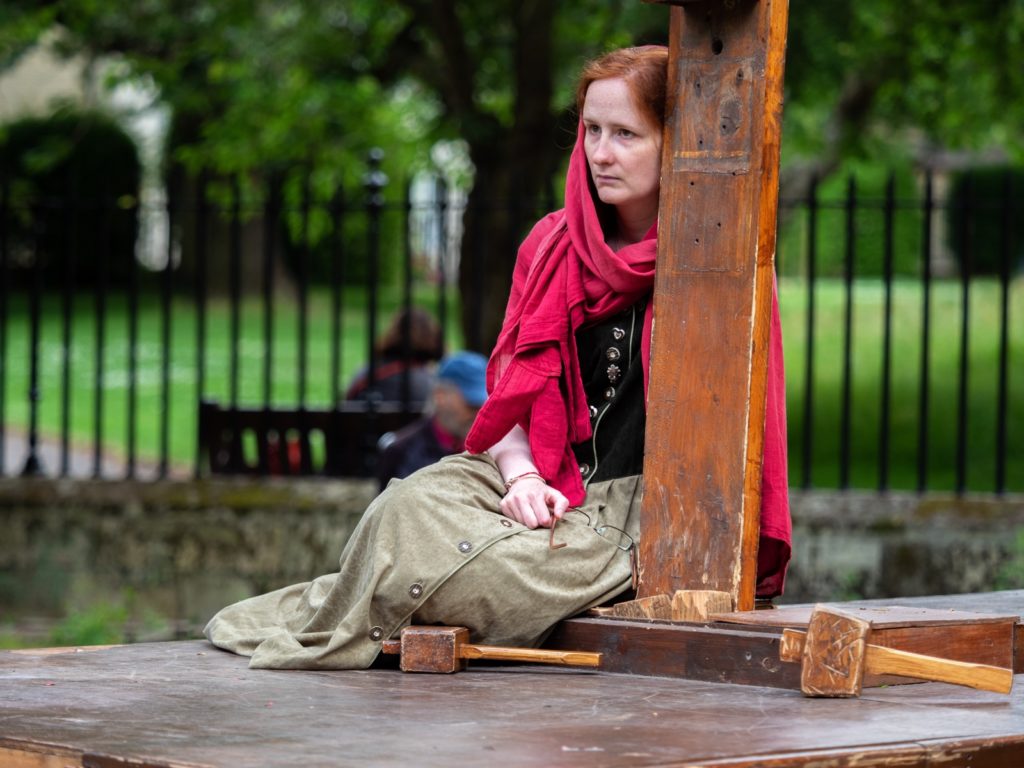
A Resurrection For York, Residents Garden, Minster Library, Dean’s Park, York
HAPPENSTANCE may have led to this pandemic-delayed production being staged at the Residents Garden in Dean’s Park, but A Resurrection For York made a compelling case for the York Mystery Plays to take up residence there.
The gardens are self-contained, behind iron railings that facilitate curious passers-by taking a look; the acoustics are clear, without echo; the Minster bells chime on the quarter hour to both complement and compliment the atmosphere, and the setting is perfect for open-air theatre: spacious, green and on a hillock that cries out to be used for moments of high drama or an important monologue.
As Saturday morning’s audience gathered under grey clouds, Philip Parr’s cast members for this York Mystery Plays Supporters Trust, York Festival Trust and York Minster tripartite production were already in situ for the first of six performances in two days.
The premise was that they were playing pilgrims, two canvas tents pitched at the back, everyone in walking boots, with roll-up sleeping mats, blankets, rucksacks and picnics in Enid Blyton retro brown paper bags.
Intentionally, community cast and community audience became indistinguishable: we were all in this together, albeit socially distanced; pilgrims all, gathered to tell each other stories, led by Nick Jones and Sally Maybridge’s exhorting narrators.
From this canvas would emerge Parr’s Pilgrims, dotted around the grass, some staying in that guise, others taking on specific roles, both alongside and on the two static wagons rolled out for significant scenes, one to set the cross in place.
The cross always will be the most potent symbol of the York Mystery Plays, and here it was especially central to Parr and 2018 York Mystery Plays director Tom Straszewski’s hour-long story, adapted from the Mystery Plays cycle of the crucifixion and the events that followed.
The most powerful image was in fact an absence, the dying Christ being represented instead by a shroud, wrapped around the cross pulled high by the grafting soldiers, one declaring himself too tired to finish the task in one of those brief interjections of humour that the Mystery Plays – the street theatre of its time – suddenly throw up.
The shroud became the motif woven through Parr’s production, daubed in blood, later folded up across a wagon to signify Christ’s body placed in the tomb by Joseph of Arimathea (Tony Froud), and then being worn by a tall, dark-haired figure, again emerging from the crowd.
In keeping with medieval tradition, the pilgrim playing Christ was not credited, although a reference to “plus David Denbigh” in the list supplied to CharlesHutchPress may indicate it was him.
Judith Ireland’s Mary, Mother of Jesus, and Emily Hansen’s Mary Magdalene stood out in a cast strong on diction and clear delivery. Music played its part too, largely acappella, choral or folk, with minimal accompaniment, and used sparingly but sung lustily or movingly.
What comes next? 2022 is very likely to see the York Mystery Plays being staged on wagons in June, maybe at the Residents Garden. Watch this space.
